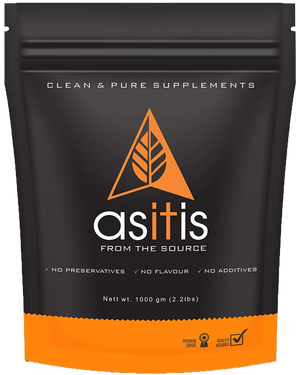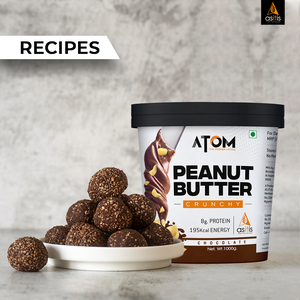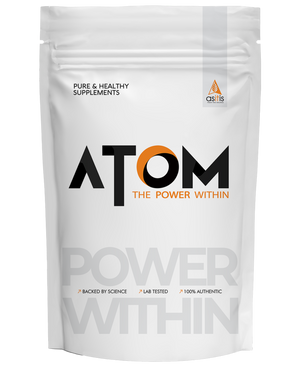
Creatine Monohydrate - Myths & Misconceptions

I
n the sports nutrition market, misinformation, misconceptions, and false beliefs are pretty common. It so feels like false news travel faster than true stories in all categories of information. The myths spread something like this, ‘they say……………..’ never know who ‘they’ are!!
If you are pretty educated, then myths can be relatively harmless to you, and if you’re not, it’ll lead you to make bad decisions.
Today’s blog is about the pervasive misinformation about ‘Creatine Monohydrate’ that needs a quick fix…here we go…
Also Read: Creatine Monohydrate – Enhances Energy & Performance
Creatine Monohydrate – The Power Supplement
Creatine Monohydrate is one of the most researched and effective ergogenic supplement. The non-protein nitrogenous compound has consistently shown positive results in boosting rep, shortening relaxation during repeated rapid muscle contraction, and powering you up for more explosive workout sessions.
Creatine is majorly stored in skeletal muscles, hence Creatine’s name is derived from the Greek word for flesh. Creatine is produced in the body in small amounts in the liver and pancreas from amino acids, arginine, glycine, and methionine. Dietary supplementation of Creatine provides an efficient and inexpensive means of increasing the availability of Creatine. Creatine supplementation increases the muscle phosphocreatine stores which donates its phosphate group to ADP when muscle need energy.
Also Read: Whey & Creatine Together – How Do You Benefit?
MYTH 1: CREATINE MONOHYDRATE CAUSES MUSCLE CRAMPING
The rationale that Creatine supplementation causes muscle cramps is based on the premise that Creatine causes changes in muscle cell volume. Creatine enters muscle cells and increases intracellular osmolality. The accumulation of Creatine within muscle cells leads to a fluid shift from the extracellular spaces to intracellular spaces.
People on Creatine supplementation, when they do workouts in increased environmental temperatures will experience water loss from the body due to severe sweating, this may cause negative consequences with respect to thermal regulation, may cause electrolyte imbalance, and heat-related musculoskeletal issues, like muscle cramping. What you need to note here is that such consequences will still happen whether you take Creatine or not.
Not drinking adequate water is to be blamed in this scenario, Creatine actually facilitates smooth muscle contractions by increasing the muscle hydrating effect.

No research studies validate that Creatine Monohydrate causes muscle cramping.
Also Read: Is Creatine a Steroid?
MYTH 2: CREATINE INCREASES FAT MASS
The notion that Creatine increases fat mass arises because Creatine is marketed as a mass-gaining supplement. If you are consuming Creatine with the added carbs or a high-calorie diet to bulk up, the increased calorie intake might likely lead you to fat gains or in some cases, the added pounds aren’t due to fat gain, but could be due to muscle mass gain. However, Creatine’s job is to increase potential energy for workouts while helping to provide maximum stimulation to your muscles during workouts. Creatine boosts the muscle strength to push your workout, which actually supports fat burning and building lean muscle mass.

As per studies, Creatine supplementation during resistance training had no effect on fat mass. Creatine on its own does not increase fat mass. It should be noted that any changes in body composition, including fat mass and muscle mass, are influenced by a variety of factors, like diet, exercise, genetics, and lifestyle.
Also Read: Does Creatine Cause Hair Loss?
MYTH 3: CREATINE INCREASES WATER RETENTION & CAUSES DEHYDRATION & BLOATING

Since Creatine is an osmotically active substance, an increase in the body’s Creatine content is shown to increase muscle water retention and total body water volume. Water retention caused by Creatine is only localized (intracellular), in fact, beneficial for muscle protein synthesis, it does not alter fluid distribution (meaning it does not cause a fluid shift) or dehydration. Creatine does not cause a bloating or puffy feeling throughout the body. If you are someone with a compromised digestive system, make sure you take small doses of Creatine.

Studies suggest Creatine supplementation increases intracellular volume, over the short term but does not alter the fluid distribution. Current research evidence does not suggest that Creatine causes dehydration. Excessive doses of any supplement can result in digestive issues, recommended doses of Creatine rarely cause gastric upset or bloating. Generally loading on Creatine will cause this effect in some.
Also Read: Can You Use Creatine While Cutting?
MYTH 4: CREATINE CAUSES KIDNEY DAMAGE
This is an unsubstantiated perspective that an increase in Creatine levels will reflect a decrease in kidney function. Creatine metabolism produces creatinine as a byproduct and kidneys excrete creatinine.
Creatine supplementation when taken in recommended dosages, does not cause kidney damage in healthy individuals. Reports of kidney damage associated with Creatine use are scanty. Maintain adequate hydration to support optimal kidney function.

There is no validation to prove that Creatine supplementation causes kidney damage. However, Creatine supplementation is not suggested for people with renal disease or those using nephrotoxic medication. Both long and short-term supplementation of Creatine has consistently been found to produce no adverse effects on kidney function in healthy individuals with no pre-existing kidney conditions.
Also Read: Can Women Use Creatine Supplement?
MYTH 5: LOADING PHASE OF CREATINE IS REQUIRED
A common misconception about Creatine is that individuals must load with creatine to increase the intramuscular creatine stores to experience the ergogenic benefits of Creatine supplementation. The loading phase no doubt increases intramuscular creatine stores but the loading phase of Creatine is not required by all.
It’s a common approach used by some individuals to rapidly increase muscle creatine stores. The loading phase involves taking a high dose of Creatine for a short period, typically around 20g per day for 7 days, followed by a maintenance phase, where a lower dose of around 3-5g is taken to sustain elevated Creatine levels.

A lower daily creatine supplementation strategy (3-5g) is well established by research studies for increasing intramuscular stores. The loading phase is not required for everyone, supplementation strategy will depend on the goal of the individual (if you want to maximize ergogenic potential in a short period of time). The gradual approach of taking around 3-5g of Creatine per day without the loading phase can also effectively increase muscle creatine levels over time. This slower approach may take a few weeks to reach optimal levels, but it can be just as effective in the long term.
Also Read: BCAA Vs Creatine, Creatine Vs Arginine, Creatine Vs Carnitine
Creatine is a great supplement if you are looking to support your muscle growth, muscle strength, energy levels, performance, and recovery…
Level up your performance with Creatine boost…Creatine turns up the intensity of your workouts, drives your muscular contraction, and helps you train with maximum output…
Also Read: Top 10 Myths Vs Facts On Whey Protein
 Follow our Instagram page for the latest updates: badalkhudko
Follow our Instagram page for the latest updates: badalkhudko
Reference:
https://www.ncbi.nlm.nih.gov/pmc
https://pubmed.ncbi.nlm.nih.gov









Leave a comment